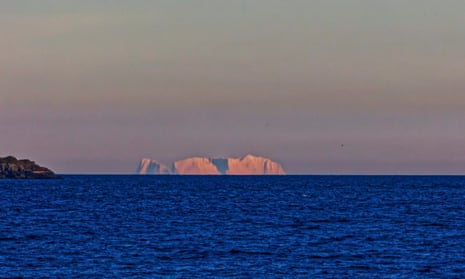Clear winter skies and the promise of a recent evening’s beautiful sunset led photographer Simone Engels to a nearby park on Vancouver Island. But as she trained her lens on the pinkish hue of the landscape of the Pacific coast, she was shocked to see a large, iceberg-like shape on the horizon.
“It was this huge, shiny, three-dimensional tubular structure,” she said. “It looked so real.”
Engels, who previously studied geography, cycled through possible explanations, including that a large piece of ice had improbably drifted down from Alaska, miraculously passing through narrow straits and dodging archipelagos.
But if an iceberg was in the area – especially one of that size – it would surely have made local news, she told herself.
“I was trying to pin this together in my head, and I really couldn’t come up with an explanation,” she said. “It just looked so odd and I was nearly convinced that it really was an iceberg I was staring at.”
With no one else around to confirm the mysterious sighting, she snapped an image and for nearly half an hour, watched the hulking white shape on the horizon before it disappeared from sight.
Engels shared the image online, hoping to get an explanation. The photograph initially stumped locals – including a friend who specializes in ice geomorphology.
The image soon went viral and Engels learned that the mysterious iceberg was really a mirage.
She was actually viewing the Cheam mountain range on the mainland of British Columbia, nearly 200km (124 miles) away – and beyond the horizon from where Engels was standing.
The illusion was caused by what is known as a “superior mirage” which is caused during a temperature inversion, when a band of warm air rests on a layer of cold air, bending light rays downwards.
Light from the setting sun was reflecting off the range and bending down, placing the range on the horizon. At a distance, the snow-covered peaks looked eerily similar to a towering iceberg.
Engels has seen previous mirages in the area, but nothing as crisp and stable as the mountain range that January evening.
“We live in some challenging times right now with a pandemic and it’s really important for people to realize that there are natural wonders out there to be discovered,” she said of the experience, which left her in awe. ‘You can find natural wonders in your own backyard when you get out there and explore.”
